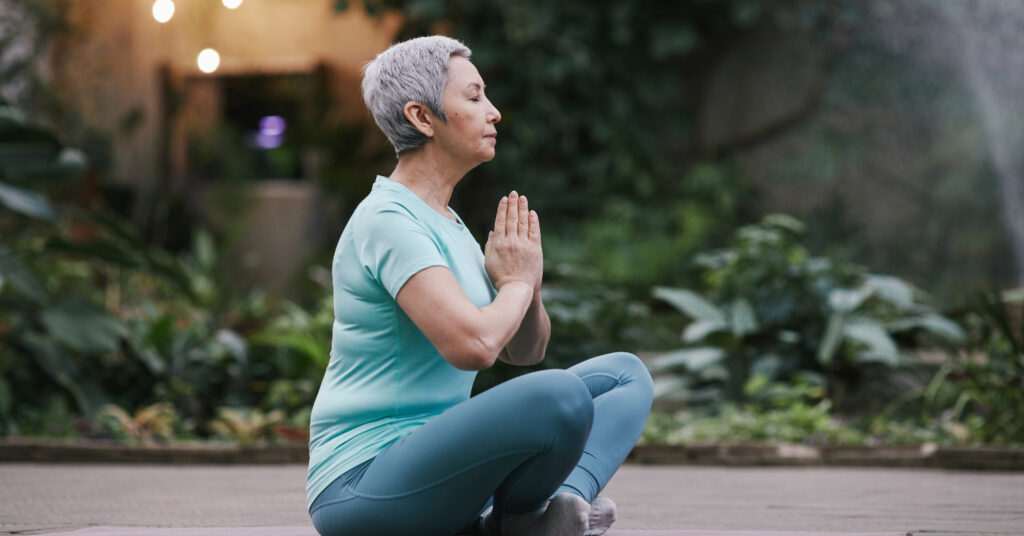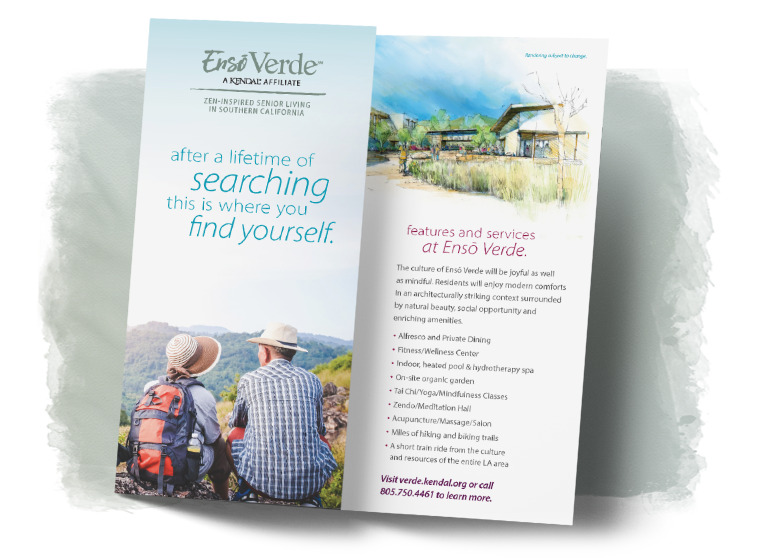
Although we gratefully acknowledge that longer life spans are a gift, aging can bring with it difficulties like aches and pains, cognition changes, personal loss, depression, and anxiety.
Modern medicine has tools to help us manage many of these things. But there’s another intervention we can turn to that can help us cope with the physical and emotional issues of getting older.
It’s mindfulness.
Research has shown that practicing mindfulness can actually improve one’s overall physical and mental well-being. One study in older adults suffering from chronic pain found that participants reported beneficial effects of mindfulness practice on pain, sleep, and well-being. Participants also said that enhanced well-being was reflected in both elevated mood and increased overall quality of life.
In this article, we’ll discuss what mindfulness is, share mindfulness exercises and activities, and provide ideas on how you can practice mindfulness.
What mindfulness is — and isn’t
To understand how to practice mindfulness, it’s helpful first to understand what mindfulness is and what it’s not. Mindfulness is about choosing to pay attention to what’s happening right now and accepting things as they actually are. All it means is that you’re fully present for whatever it is you’re doing.
It’s not blocking out distractions. It’s not mind control. It’s not an intellectual exercise, nor is it passive. And best of all, it’s not out of your reach. Every moment is an opportunity for you to be mindful. It’s a choice you make and a habit you can develop, more than a skill you need to learn.
While mindfulness might seem pretty straightforward, it’s not necessarily all that easy. The real work is to make time every day to just keep doing it. Here’s a helpful step-by-step list to get you started:
- Find a place to sit that feels calm and quiet to you.
- If you’re just starting out, choose a short time, such as 5 or 10 minutes, or even a minute if that’s all you have.
- Follow the sensation of your breath as it goes out and as it goes in.
- Inevitably, your attention will leave the sensations of your breath and wander to other places. When you get around to noticing this — in a few seconds, a minute, in five minutes — simply return your attention to your breath.
- Don’t judge yourself or obsess over the content of the thoughts you find yourself lost in. Just come back.
There are many different mindfulness activities and exercises you can try; the point is to find something you enjoy and can make a habit of doing. Over time, and with enough practice, you might find that mindfulness becomes effortless. Here are just three exercises to try.
- Journaling. Many people find journaling to be among the easier mindfulness techniques. That might be because writing is a very focused action and requires attention. There are three common types of journaling: gratitude, where you list five things you’re grateful for; reflective, where you write down something good or bad that’s happened to you that you can self-reflect on and learn from; and stream of consciousness; which is writing without a prompt or goal in mind.
- The five senses. This grounding technique uses all your senses to help you feel entirely centered and encourages your brain to refocus thoughts on what’s happening right now. Name five sensations that you can feel in your body: four things you can hear, three things that you can see, two things you can smell, and one thing you can taste.
- The 4-7-8 breathing technique. Breathe quietly in through your nose for a count of 4, then hold your breath for a count of 7, then breathe forcefully out of your mouth for a count of 8. Repeat for 4 breath cycles.
It takes time to become comfortable with mindfulness activities. Even those who have spent decades practicing mindfulness haven’t perfected it. As long as you approach the experience with an open mind, there’s no wrong way to react to mindfulness practice, and there are benefits, no matter how “good” you are at it.
_________________________________________________________________________
If you’re interested in mindfulness, Ensō Verde invites you to learn what it truly means to live mindfully. Ensō Verde will be a Zen-inspired senior living community with a focus on mindful aging, the joys of nature, environmental stewardship, contemplative care, and healthy life choices for adults 60+. We’re here to answer your questions and help you discover more about Ensō Verde. Simply call us at 805.750.4461, or share your contact information to start a conversation.

The Right Decision Starts with the Right Information
We’ve created an informative community brochure that will introduce you to Zen-inspired senior living coming soon to Ventura County. You’ll learn about our partnership with the San Francisco Zen Center and The Kendal® Corporation, the advantages of a Life Plan Community, our uniquely different values and practices, benefits of living at our community, and much more!
